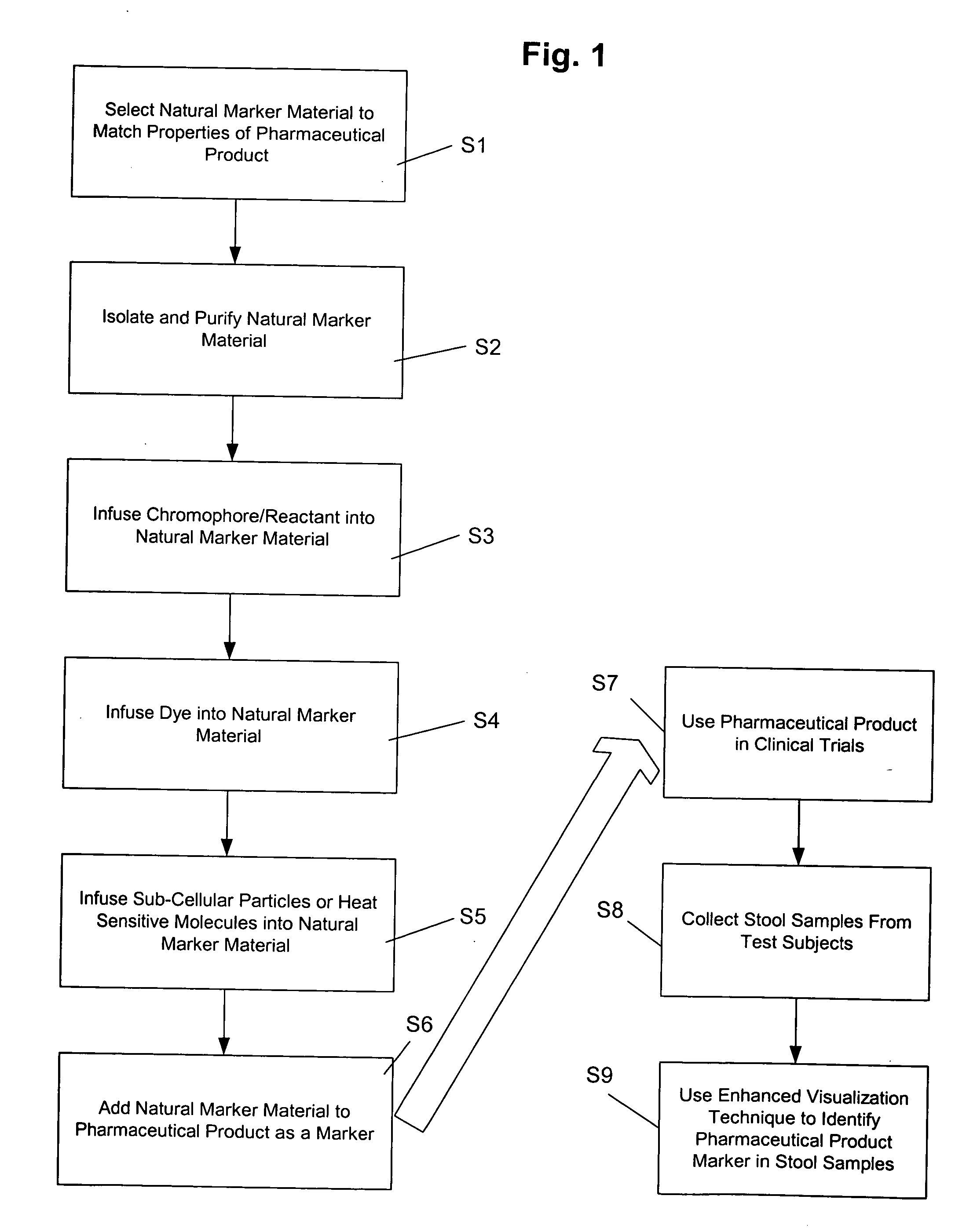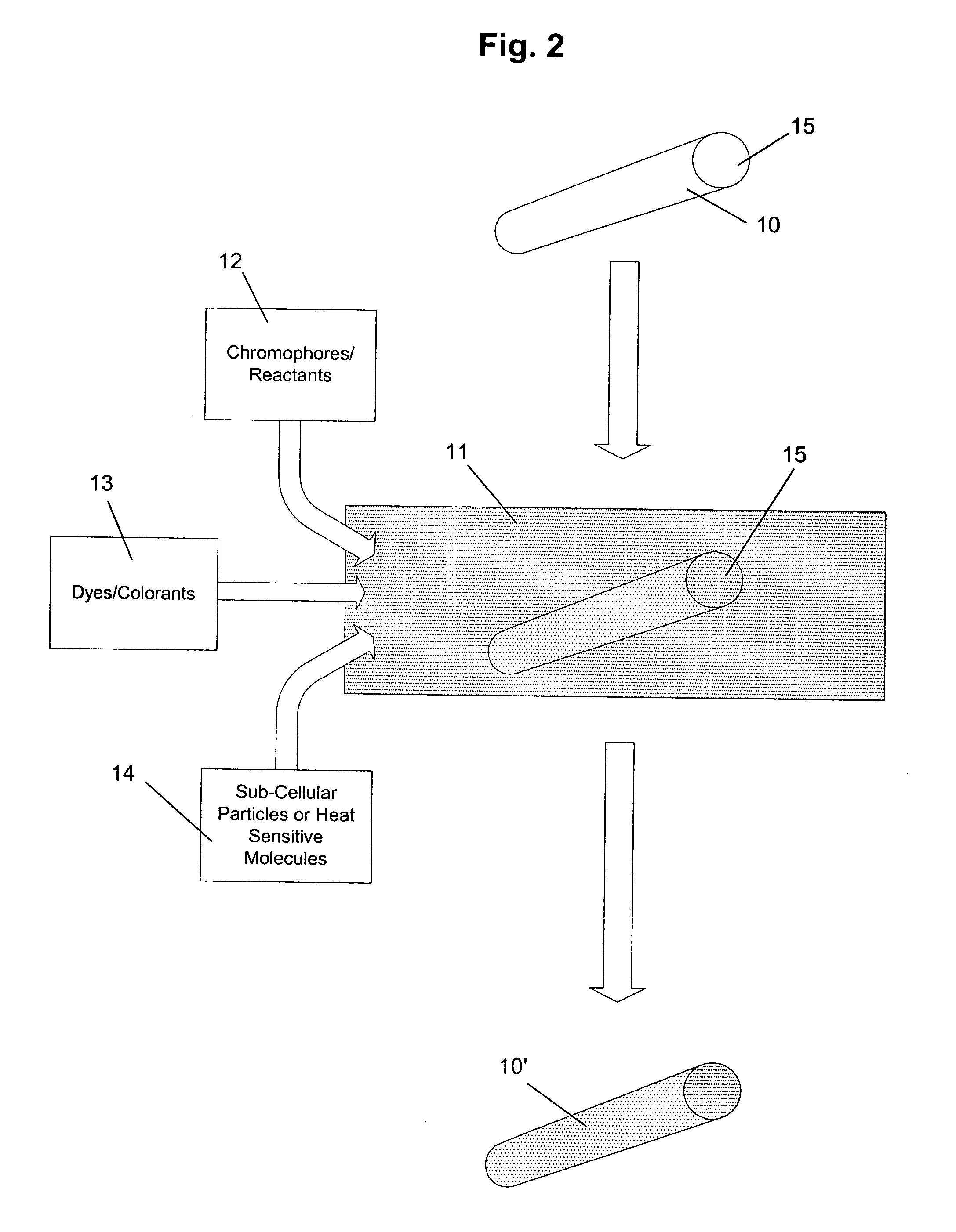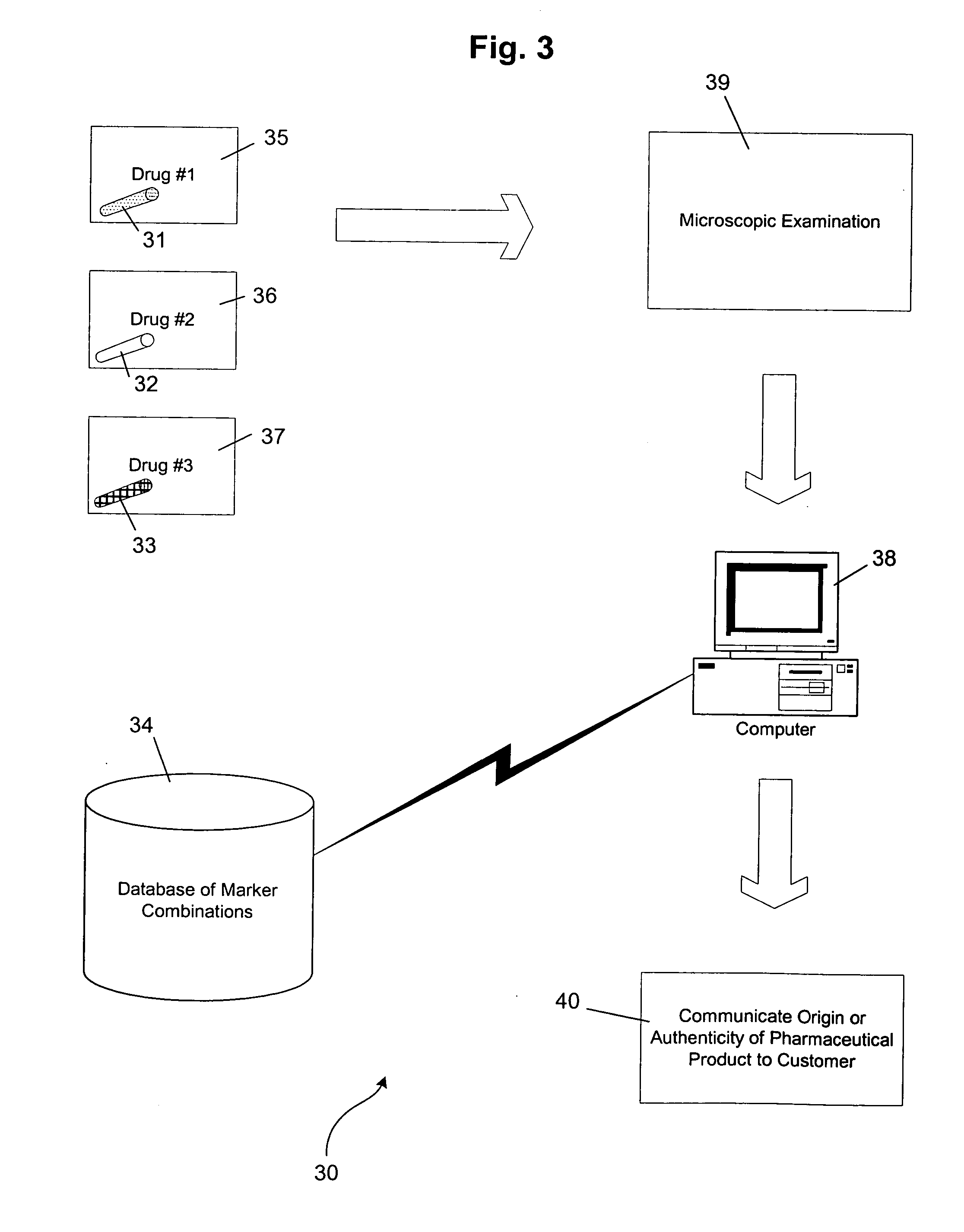Methods of marking and testing pharmaceutical products
a technology of pharmaceutical products and markers, applied in the field of products marking, can solve the problems of difficult to know with certainty whether someone is taking a prescribed drug, feces monitoring does not provide conclusive proof of a particular drug, and adding a marker to the drug being tested has not been a viable option, etc., to achieve enhanced visualization techniques, rapid identification, enhanced visualization techniques
- Summary
- Abstract
- Description
- Claims
- Application Information
AI Technical Summary
Benefits of technology
Problems solved by technology
Method used
Image
Examples
experimental examples
[0049] Several examples of the natural cellulosic plant material markers, secondary markers, molecular thermometers, and methods for preparing the markers have been given above. Specific working examples of the preparation of markers according to the present invention will now be explained.
[0050] The unique natural fibers from sycamore seeds were ground to reduce their length. These were blended into a sorbate-propionate food preservative mixture and micro-encapsulated with a fat soluble material. The concentration of marker to product was one part per million in order to verify that very low inclusion rates of markers could be used to confirm identities of products without any significant effects on a finished product. The low inclusion rate preservative was subsequently used to bake bread.
[0051] Tiny aliquots (less than 5 milligrams) of the bread were taken for examination. These sample aliquots were further prepared by heating a smaller sub-sample amount of the crumb structure ...
PUM
 Login to View More
Login to View More Abstract
Description
Claims
Application Information
 Login to View More
Login to View More - R&D
- Intellectual Property
- Life Sciences
- Materials
- Tech Scout
- Unparalleled Data Quality
- Higher Quality Content
- 60% Fewer Hallucinations
Browse by: Latest US Patents, China's latest patents, Technical Efficacy Thesaurus, Application Domain, Technology Topic, Popular Technical Reports.
© 2025 PatSnap. All rights reserved.Legal|Privacy policy|Modern Slavery Act Transparency Statement|Sitemap|About US| Contact US: help@patsnap.com



